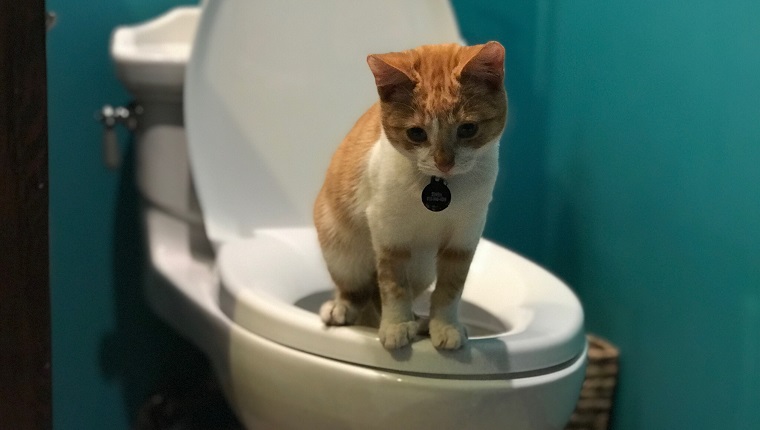Avoid Toilet Emergencies: Don't Flush Cat Poop Down Your Toilet - Expert Advice
Avoid Toilet Emergencies: Don't Flush Cat Poop Down Your Toilet - Expert Advice
Blog Article
The article below pertaining to Can You Flush Cat Poo or Litter Down the Toilet? is truly enjoyable. Read on and draw your own ideas.

Introduction
As feline owners, it's important to bear in mind how we get rid of our feline pals' waste. While it may appear practical to flush pet cat poop down the toilet, this technique can have damaging repercussions for both the environment and human wellness.
Alternatives to Flushing
Luckily, there are safer and more liable methods to dispose of pet cat poop. Think about the following choices:
1. Scoop and Dispose in Trash
One of the most typical method of taking care of feline poop is to scoop it right into a naturally degradable bag and toss it in the garbage. Make sure to make use of a devoted trash inside story and throw away the waste immediately.
2. Use Biodegradable Litter
Opt for eco-friendly feline litter made from products such as corn or wheat. These trashes are eco-friendly and can be securely taken care of in the trash.
3. Hide in the Yard
If you have a yard, think about hiding cat waste in a marked area far from veggie gardens and water resources. Make certain to dig deep adequate to prevent contamination of groundwater.
4. Mount a Pet Waste Disposal System
Invest in a family pet waste disposal system particularly designed for feline waste. These systems make use of enzymes to break down the waste, reducing smell and environmental influence.
Health Risks
In addition to environmental issues, purging cat waste can additionally present health threats to people. Pet cat feces may include Toxoplasma gondii, a bloodsucker that can cause toxoplasmosis-- a potentially severe ailment, particularly for expecting females and people with damaged immune systems.
Environmental Impact
Flushing cat poop presents unsafe microorganisms and parasites into the water supply, posing a considerable threat to marine ecosystems. These impurities can adversely affect marine life and compromise water top quality.
Conclusion
Accountable animal ownership extends beyond supplying food and sanctuary-- it likewise includes proper waste management. By refraining from purging pet cat poop down the toilet and going with alternative disposal techniques, we can reduce our ecological footprint and shield human wellness.
Why Can’t I Flush Cat Poop?
It Spreads a Parasite
Cats are frequently infected with a parasite called toxoplasma gondii. The parasite causes an infection called toxoplasmosis. It is usually harmless to cats. The parasite only uses cat poop as a host for its eggs. Otherwise, the cat’s immune system usually keeps the infection at low enough levels to maintain its own health. But it does not stop the develop of eggs. These eggs are tiny and surprisingly tough. They may survive for a year before they begin to grow. But that’s the problem.
Our wastewater system is not designed to deal with toxoplasmosis eggs. Instead, most eggs will flush from your toilet into sewers and wastewater management plants. After the sewage is treated for many other harmful things in it, it is typically released into local rivers, lakes, or oceans. Here, the toxoplasmosis eggs can find new hosts, including starfish, crabs, otters, and many other wildlife. For many, this is a significant risk to their health. Toxoplasmosis can also end up infecting water sources that are important for agriculture, which means our deer, pigs, and sheep can get infected too.
Is There Risk to Humans?
There can be a risk to human life from flushing cat poop down the toilet. If you do so, the parasites from your cat’s poop can end up in shellfish, game animals, or livestock. If this meat is then served raw or undercooked, the people who eat it can get sick.
In fact, according to the CDC, 40 million people in the United States are infected with toxoplasma gondii. They get it from exposure to infected seafood, or from some kind of cat poop contamination, like drinking from a stream that is contaminated or touching anything that has come into contact with cat poop. That includes just cleaning a cat litter box.
Most people who get infected with these parasites will not develop any symptoms. However, for pregnant women or for those with compromised immune systems, the parasite can cause severe health problems.
How to Handle Cat Poop
The best way to handle cat poop is actually to clean the box more often. The eggs that the parasite sheds will not become active until one to five days after the cat poops. That means that if you clean daily, you’re much less likely to come into direct contact with infectious eggs.
That said, always dispose of cat poop in the garbage and not down the toilet. Wash your hands before and after you clean the litter box, and bring the bag of poop right outside to your garbage bins.
https://trenchlesssolutionsusa.com/why-cant-i-flush-cat-poop/

I am very fascinated with How to Dispose of Cat Poop and Litter Without Plastic Bags and I am hoping you liked our entry. Liked our piece of writing? Please share it. Let another person locate it. Many thanks for going through it.
See Availability Report this page